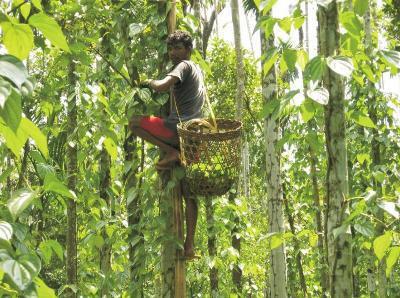Sharif Ahmed Mukul
This pilot survey will collect disappearing indigenous knowledge of medicinal plant use, their status, population dynamics, and conservation implications in one of the most diverse forest patch and national park of Bangladesh.

The Khasia betel-leaf based agroforestry practice.
Plant based remedies have regularly been used for healing ailments by indigenous communities for centuries. In Bangladesh, the traditional knowledge of such communities has also made an outstanding contribution in the origin and evolution of many effective herbal therapies. However in previous years due to rapid environmental and social change the stock and abundance of many medicinal plants in country’s natural habitats, and their associated indigenous knowledge system becomes vulnerable. The situation has further hastened by poor conservation consensus among rural herbal healers, unawareness, rapid and unplanned commercialization, and faulty harvesting of many useful medicinal plants.
This pilot project will consist of two major parts - a preliminary ethno-botanical study following by a complete ecological survey. The project also expected to lead country’s one of the pioneer and elaborate ecological investigation to realize the dynamics and population status of declining medicinal flora in one of the most diverse forest patch of Bangladesh – Lawachara National Park (GPS location: 24°30'-24°32'N and 91°37' - 91°39'E). The park comprise of some 1,250 ha of mixed evergreen to wet evergreen tropical forests and home of a number of globally important wild fauna including critically endangered hoolock gibbon (Hoolock hoolock).
Several ethnic communities having shared dependency on the national park live in and vicinity of the park. They also believed to hold a rich ethno-medicinal knowledge and have been relying on medicinal plants collected locally from the park area for their primary healthcare. The preliminary ethno-botanical survey will aim to document the disappearing traditional herbal knowledge of these indigenous communities inhabiting park and surrounding reserved forest. Project finally will contribute in raising community awareness and formulate an action plan for participatory conservation, use and sustainable harvesting of medicinal plants from the park and adjacent areas.